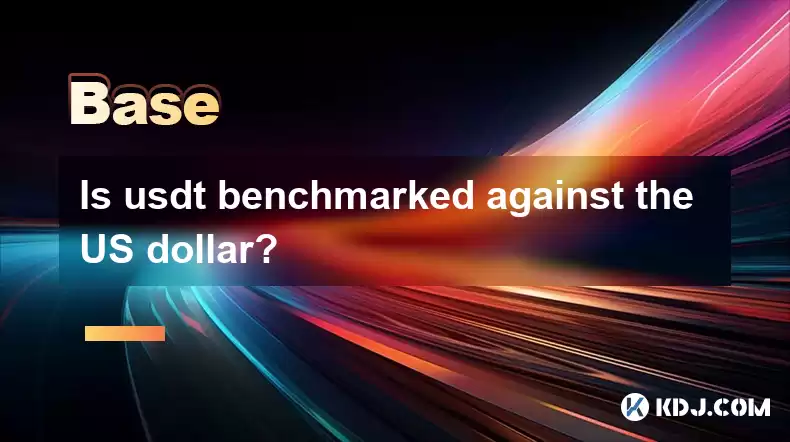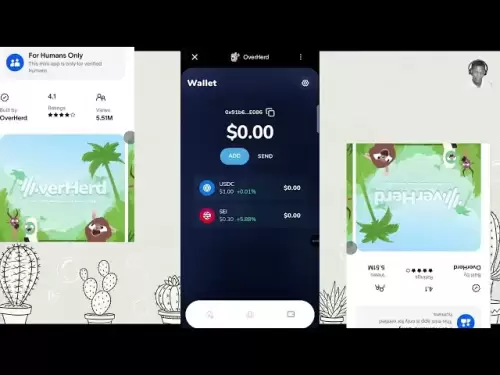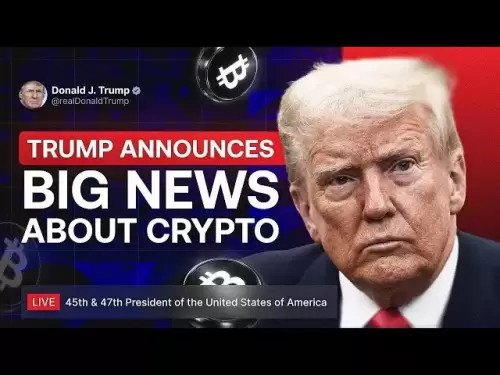-
 Bitcoin
Bitcoin $114200
0.00% -
 Ethereum
Ethereum $3637
0.56% -
 XRP
XRP $2.950
-2.01% -
 Tether USDt
Tether USDt $0.9999
0.02% -
 BNB
BNB $761.0
0.55% -
 Solana
Solana $164.1
-1.38% -
 USDC
USDC $0.9999
0.02% -
 TRON
TRON $0.3332
0.36% -
 Dogecoin
Dogecoin $0.2012
-0.52% -
 Cardano
Cardano $0.7261
-1.41% -
 Hyperliquid
Hyperliquid $37.62
-2.13% -
 Stellar
Stellar $0.3930
-2.65% -
 Sui
Sui $3.441
-0.16% -
 Bitcoin Cash
Bitcoin Cash $563.8
0.70% -
 Chainlink
Chainlink $16.50
0.09% -
 Hedera
Hedera $0.2424
-0.14% -
 Ethena USDe
Ethena USDe $1.001
0.01% -
 Avalanche
Avalanche $22.20
0.00% -
 Litecoin
Litecoin $118.0
-2.48% -
 UNUS SED LEO
UNUS SED LEO $8.991
0.12% -
 Toncoin
Toncoin $3.195
-3.87% -
 Shiba Inu
Shiba Inu $0.00001217
0.12% -
 Uniswap
Uniswap $9.674
-0.21% -
 Polkadot
Polkadot $3.633
1.00% -
 Monero
Monero $295.3
-0.82% -
 Dai
Dai $0.9999
0.00% -
 Bitget Token
Bitget Token $4.321
-0.41% -
 Cronos
Cronos $0.1392
0.73% -
 Pepe
Pepe $0.00001027
-0.89% -
 Aave
Aave $258.5
0.32%
Is usdt benchmarked against the US dollar?
USDT's benchmarking mechanism primarily involves a 1:1 redemption option, asset backing, and controlled issuance to ensure stability within a narrow range around $1.
Jan 23, 2025 at 10:12 pm

Key Points:
- Understanding USDT Benchmarking
- Stability Mechanisms for USDT
- Legal and Regulatory Considerations
- Trust Issues and Due Diligence
Is USDT Benchmarked Against the US Dollar?
USDT (Tether) is a stablecoin pegged to the value of the US dollar (USD). This means that each USDT unit is designed to be equivalent to one US dollar. USDT's value is typically stable, fluctuating within a narrow range around $1.
USDT Benchmarking Mechanism
USDT's benchmarking against the US dollar is achieved through various mechanisms:
- Redemption: USDT holders can redeem their USDT for US dollars at a 1:1 ratio through the Tether platform. This withdrawal option ensures that the supply of USDT remains constrained by the underlying USD reserves.
- Backing Assets: Tether claims that USDT reserves are backed by a diverse portfolio of assets, including US Treasury bonds, commercial paper, and cash equivalents. These reserves serve as a buffer to support USDT's stability.
- Stablecoin Issuance: Tether issues new USDT only when it receives an equivalent amount of USD in its reserves. This helps maintain the peg to the dollar.
USDT Stability: Control Mechanisms
Tether employs several measures to maintain USDT's stability:
- Market Operations: Tether intervenes in the market by buying and selling USDT to regulate supply and demand. This helps minimize price volatility and keep USDT close to its $1 peg.
- Collateralization: Tether's reserves include overcollateralized assets, providing an additional layer of security against potential market fluctuations.
- Audits: Tether undergoes regular audits to provide independent verification of its reserves and compliance with the peg to the US dollar.
Regulatory Landscape and Trust
The regulatory landscape for stablecoins is still evolving, with various jurisdictions taking different approaches. There have been concerns regarding the transparency and oversight of stablecoin issuers like Tether, leading to trust issues among some users.
- Legal Challenges: Tether has faced legal challenges related to its reserve composition and claims about its stability. These challenges have raised questions about the reliability of USDT's benchmarking against the US dollar.
- Due Diligence: Before using USDT, it is crucial to conduct thorough due diligence on the issuer, the underlying reserves, and the regulatory environment.
FAQs
How do I verify the stability of USDT?
- Check reputable data sources for information on USDT price history, market volatility, and exchange rates.
What are the risks associated with USDT?
- Counterparty risk, market volatility, regulatory challenges, and potential for misuse.
Can USDT be used to transact in different currencies?
- Yes, USDT can be used to facilitate cross-currency transactions, but its stability is primarily benchmarked against the US dollar.
Disclaimer:info@kdj.com
The information provided is not trading advice. kdj.com does not assume any responsibility for any investments made based on the information provided in this article. Cryptocurrencies are highly volatile and it is highly recommended that you invest with caution after thorough research!
If you believe that the content used on this website infringes your copyright, please contact us immediately (info@kdj.com) and we will delete it promptly.
- Binance, CZ, and the FTX Fallout: The $1.8 Billion Question
- 2025-08-06 18:30:12
- Brendan Rodgers, Celtic, and the Greg Taylor Role: A Tactical Conundrum
- 2025-08-06 18:50:12
- Coinbase Stock, Investment, and Earnings: Navigating Crypto's Tides
- 2025-08-06 18:55:54
- DALPY Coin: Investor Buzz Swirls Around Upcoming 'Game-Changing' Features
- 2025-08-06 18:30:12
- BlockchainFX: Your Ticket to 1000x Crypto Gains in '25?
- 2025-08-06 19:30:12
- Dogecoin Price, Technical Indicators, and Trader Sentiment: A NYC Perspective
- 2025-08-06 19:35:12
Related knowledge

What is the difference between CeFi and DeFi?
Jul 22,2025 at 12:28am
Understanding CeFi and DeFiIn the world of cryptocurrency, CeFi (Centralized Finance) and DeFi (Decentralized Finance) represent two distinct financia...

How to qualify for potential crypto airdrops?
Jul 23,2025 at 06:49am
Understanding What Crypto Airdrops AreCrypto airdrops refer to the distribution of free tokens or coins to a large number of wallet addresses, often u...

What is a crypto "airdrop farmer"?
Jul 24,2025 at 10:22pm
Understanding the Role of a Crypto 'Airdrop Farmer'A crypto 'airdrop farmer' refers to an individual who actively participates in cryptocurrency airdr...

What is the difference between a sidechain and a Layer 2?
Jul 20,2025 at 11:35pm
Understanding the Concept of SidechainsA sidechain is a separate blockchain that runs parallel to the main blockchain, typically the mainnet of a cryp...

What is the Inter-Blockchain Communication Protocol (IBC)?
Jul 19,2025 at 10:43am
Understanding the Inter-Blockchain Communication Protocol (IBC)The Inter-Blockchain Communication Protocol (IBC) is a cross-chain communication protoc...

How does sharding improve scalability?
Jul 20,2025 at 01:21am
Understanding Sharding in BlockchainSharding is a database partitioning technique that is increasingly being adopted in blockchain technology to enhan...

What is the difference between CeFi and DeFi?
Jul 22,2025 at 12:28am
Understanding CeFi and DeFiIn the world of cryptocurrency, CeFi (Centralized Finance) and DeFi (Decentralized Finance) represent two distinct financia...

How to qualify for potential crypto airdrops?
Jul 23,2025 at 06:49am
Understanding What Crypto Airdrops AreCrypto airdrops refer to the distribution of free tokens or coins to a large number of wallet addresses, often u...

What is a crypto "airdrop farmer"?
Jul 24,2025 at 10:22pm
Understanding the Role of a Crypto 'Airdrop Farmer'A crypto 'airdrop farmer' refers to an individual who actively participates in cryptocurrency airdr...

What is the difference between a sidechain and a Layer 2?
Jul 20,2025 at 11:35pm
Understanding the Concept of SidechainsA sidechain is a separate blockchain that runs parallel to the main blockchain, typically the mainnet of a cryp...

What is the Inter-Blockchain Communication Protocol (IBC)?
Jul 19,2025 at 10:43am
Understanding the Inter-Blockchain Communication Protocol (IBC)The Inter-Blockchain Communication Protocol (IBC) is a cross-chain communication protoc...

How does sharding improve scalability?
Jul 20,2025 at 01:21am
Understanding Sharding in BlockchainSharding is a database partitioning technique that is increasingly being adopted in blockchain technology to enhan...
See all articles

























































































